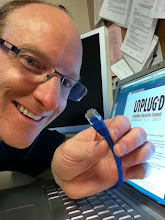But too often, it's the gap that matters. While ignoring or impeding the learning of our brightest students is one way to decrease the achievement gap, there is another 'mathematical' way to bridge the difference: Play the shell game.
Secret Tips on Closing the Gap
In the province of Ontario, students enter either academic or applied streams of courses in grade 9. The academic courses are designed for kids who got the 'I do school well' gene; while the in theory, the applied courses are meant for learners who do better with concrete learning experiences. Locally developed courses are provided to meet the needs of students with functional deficits or intellectual challenges well beyond those of the average student.
When it comes to measuring achievement in mathematics, the Education Quality and Accountability Office or EQAO, tests HS students in grade 10. The results are reported for both academic and applied streams board by board, and school by school . So each school gets a report highlighting the percentage of learners who were successful in each type of course.
Want to 'reduce the gap'? The easiest way, is to reduce the number of kids taking academic courses. Think of it this way. Students in the high end of the applied courses, will naturally pull up the achievement rates for that group. But if these same learners are in the academic courses, they are more likely to pull down the results of that group, all while leaving the applied courses with fewer successful students.
So, if a school hides its modestly talented math test-takers under the shell of applied courses, then both the applied and academic classes are more likely to have higher passing rates. The academic courses will be filled with mostly high achieving math students, while the applied courses will benefit by having more students capable of passing the test.
Sure, we'd be increasing the gap within the applied courses, but we'd be decreasing the gap in the academic courses, and the resulting EQAO statistics might well make school administrators blush.
A Test Question?
Maybe this is just the type of 'authentic' math problem that should be on the EQAO test. My guess is that a few bright students would teach the system to spit out high enough passing percentages, that future students and teachers could save themselves from the stress of the test.
Photo credits: find x by dullhunk; bridge by Malcolm Surgenor





